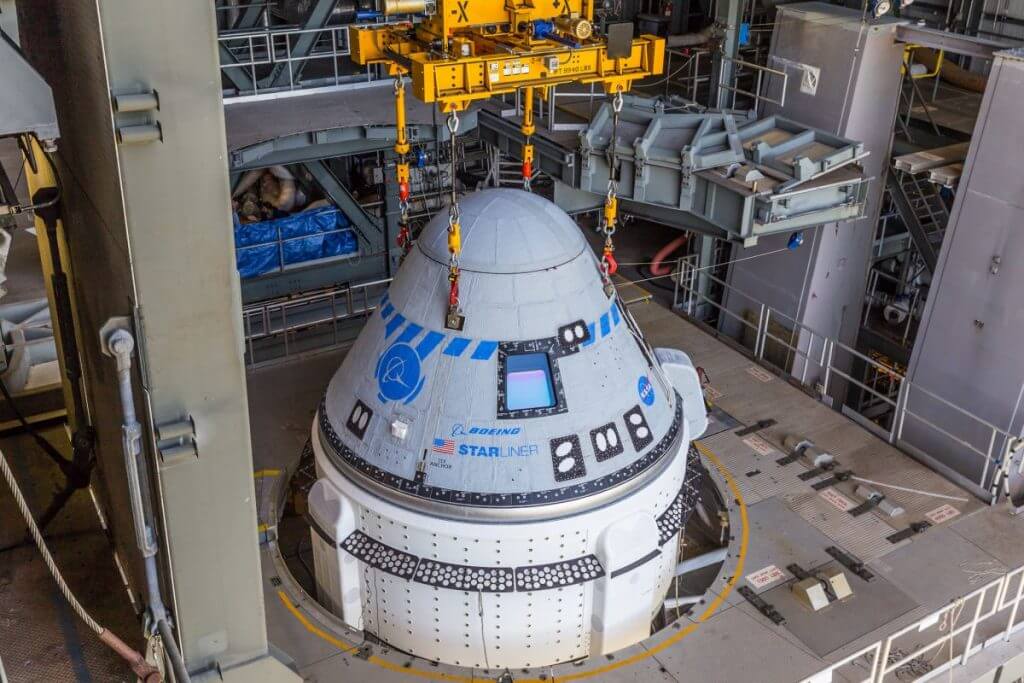
Boeing’s Starliner on track to launch crucial NASA test flight to space station on Thursday (Image Credit: Space.com)
Boeing’s Starliner astronaut taxi remains on track to launch on a crucial test flight to the International Space Station on Thursday (May 19).
Teams with NASA, Boeing and United Launch Alliance (ULA) held a launch readiness review today (May 17) for Orbital Flight Test-2 (OFT-2), which will send an uncrewed Starliner on a shakeout cruise to the orbiting lab. Everything went well, keeping Starliner on course to lift off atop a ULA Atlas V rocket on Thursday at 6:54 p.m. EDT (2254 GMT) from Cape Canaveral Space Force Station in Florida.
“It was short; it was very clean. There’s really no issues that ULA, Boeing or NASA are working for the launch coming up,” Steve Stich, manager of NASA’s Commercial Crew Program, said during a press conference today, referring to the review. “We’re at that point now where it’s time to go fly Starliner.”
In photos: Boeing’s Starliner OFT-2 mission in pictures
It took longer to get to this point than NASA, Boeing or ULA had imagined. OFT-2 was originally supposed to launch last summer, but technicians discovered during a routine preflight check that 13 of the 24 oxidizer valves in Starliner’s propulsion system were stuck.
It took about eight months to diagnose and fully address the valve problem, which was caused by a reaction between nitrogen tetroxide oxidizer and moisture in the air. This reaction produced nitric acid, which then reacted with the aluminum housing of the valves to create corrosion products that hampered valve function, Boeing representatives have said.
Boeing has mitigated the issue for OFT-2 by sealing the valves off from the humid Florida air, purging the system with nitrogen gas and cycling the valves repeatedly to make sure they work normally. But the company may make more substantial adjustments over the longer haul.
“There will be some changes; we just have to down-select what those changes are going to be,” Mark Nappi, vice president and program manager of the Boeing Commercial Crew Program, said during today’s press conference. “The redesign of the valve is certainly on the table, and the teams are working toward some of those options.”
If OFT-2 goes according to plan, Starliner will launch on Thursday and arrive at the space station just over 24 hours later. The capsule will spend four to five days docked to the orbiting lab, then come back to Earth for a parachute-aided landing in the western U.S.
The main goal is to show that Starliner is ready to carry astronauts to and from the station for NASA, which signed a contract with Boeing for such taxi services back in 2014. SpaceX holds a similar deal with the space agency and has already launched four operational crewed missions to the orbiting lab with its Falcon 9 rocket and Dragon capsule.
As its name suggests, OFT-2 will be Starliner’s second crack at a space station meetup. During the first attempt, in December 2019, the spacecraft suffered a number of software glitches and got stuck in the wrong orbit for a rendezvous with the orbiting lab.
Mike Wall is the author of “Out There” (Grand Central Publishing, 2018; illustrated by Karl Tate), a book about the search for alien life. Follow him on Twitter @michaeldwall. Follow us on Twitter @Spacedotcom or on Facebook.








